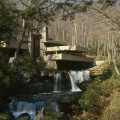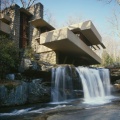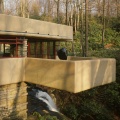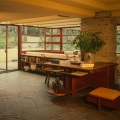Education | Timeline |
- 1829
- 1834
- 1840s
- 1848
- 1853
- 1859
- 1870
- 1870s
- 1871
- 1875
- 1877
- 1879
- 1880s
- 1882
- 1883
- 1884
- 1886
- 1887
- 1889
- 1890s
- 1891
- 1892
- 1893
- 1894
- 1895
- 1898
- 1899
- 1900
- 1900s
- 1901
- 1902
- 1904
- 1905
- 1906
- 1908
- 1909
- 1910
- 1910s
- 1911
- 1912
- 1913
- 1914
- 1915
- 1916
- 1917
- 1918
- 1919
- 1920
- 1920s
- 1921
- 1922
- 1923
- 1924
- 1925
- 1926
- 1927
- 1928
- 1929
- 1930s
- 1930
- 1931
- 1933
- 1934
- 1935
- 1936
- 1937
- 1938
- 1939
- 1940s
- 1940
- 1941
- 1942
- 1943
- 1944
- 1945
- 1946
- 1947
- 1948
- 1949
- 1950s
- 1950
- 1951
- 1952
- 1953
- 1954
- 1955
- 1956
- 1957
- 1958
- 1959
- 1960s
- 1960
- 1961
- 1962
- 1963
- 1964
- 1965
- 1966
- 1967
- 1968
- 1969
- 1970s
- 1970
- 1971
- 1972
- 1973
- 1974
- 1976
- 1979
- 1980
- 1992
Williams is recognized as an expert
His name and opinion are sought and used as endorsements in advertisements.
Los Angeles Times advertisment, August 11, 1934
Open for Inspection Beautiful Reforced Groutlock Masonry Residence
New Orleans Farm House Type, designed by Mr. Paul R. Williams
"Good architecture is an everlasting asset. It pays tremendously to have a house competently designed." (The ad describes the model house Williams designs for the first House and Garden Show on Wilshire.)
Los Angeles Times advertisement, April 15, 1934
"See the Contest Tempo Rooms. See the seven rooms in our Tempo Revue furnished by these prominent women's clubs competing for the 3 prizes..."
Judges:
Miss Mildred Bateman, Professor Fine Arts USC
Mr. Paul R. Williams, Prominent Architect
Mr. Arthur Millier, Art Critic, "The Times"
Fallingwater, Bear Run, Pennsylvania
Built in 1934 Lilliane and Edgar Kaufmann's summer home, Fallingwater, is often called "the most famous modern house in the world" by architectural historians. The Frank Lloyd Wright designed residence is secured to a rock and cantilevered over a waterfall with wings reaching out into the air. Wright describes the relationship of the house to its surroundings as that of a tree house—a made thing that is natural with "no limitations as to form."
Three-stories high, Fallingwater has few rooms but living spaces are extended with balconies, terraces and canopy-covered slabs that project from the house. Wright designs the walnut veneer furniture and interior lighting to harmonize with the design of the house. Native sandstone, slabs of reinforced concrete and flagstone are used in the interior and exterior.
Fallingwater exemplifies Wright's philosophy, "Architecture is the triumph of human imagination over materials, methods, and men." The building revitalizes Wright's career.










Federal Housing Admininstration Created
The U.S. Congress creates the Federal Housing Administration (FHA) in 1934 to revive the housing industry. During the Great Depression two million construction workers are unemployed and mortages (loans) for home buyers are difficult to obtain. Only 4 in 10 households own their home.
The role of the newly created FHA is to "insure" loans and protect the lender from losses by defaulting homeowners. FHA programs help returning veterans and their families buy homes in the 1940s. The loans are important to the growth of American suburbs.
Between 1934 and today the FHA will insure over 34 million home mortgages. Many homes in Paul R. Williams' developments, including SeaView (1960) and Carver Manor (1940), are purchased using Veterans' Administration and FHA guaranteed loans.
For many years the FHA builds large scale models of conceptual subdivisions. The Modeltowns allow Americans to visualize life in a subdivision and promote the housing industry. These photos show a 1935 FHA Modeltown Exhibit in San Diego that over 1 million visit.